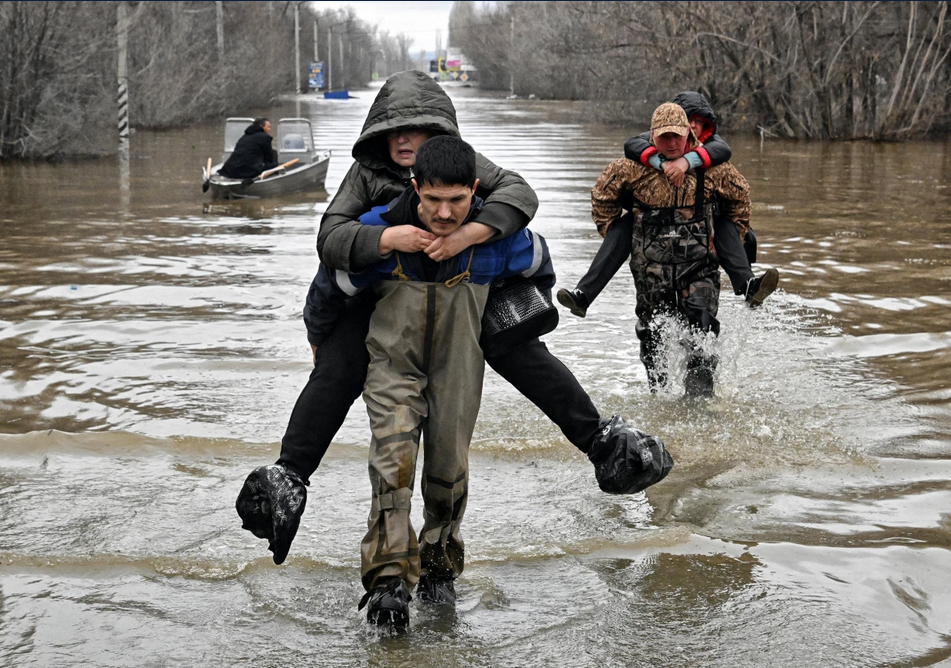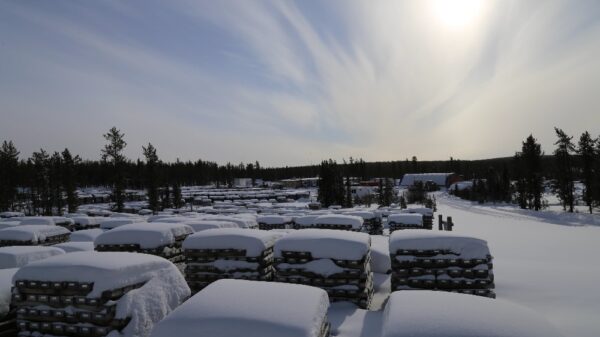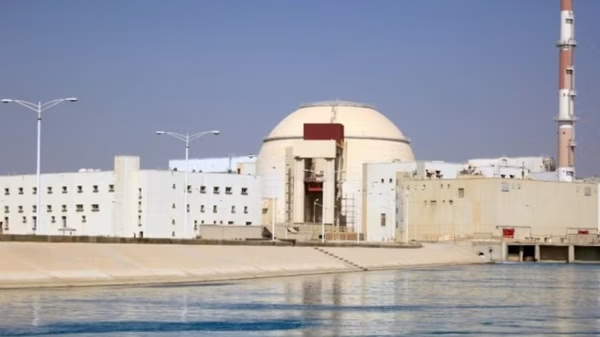On April 26, 1986, Reactor 4 of the Chernobyl power plant exploded, causing what is arguably the worst nuclear disaster of all time. Now nearly fifty years later, Russia is facing another potential nuclear catastrophe.
Rising floodwaters in Russia have proven to be a cause for concern for environmentalists, who sounded the alarm earlier this week about a potential radioactive leak from a uranium mine in the region of Kurgan in Russia’s Ural mountains.
Heavy rainfall, worsened by rapidly melting large snowfalls due to unusually high spring temperatures, has caused the worst flooding in 80 years in the Russian Urals region and neighbouring northern Kazakhstan. In recent weeks, authorities have evacuated tens of thousands of residents from the rising floodwaters in Kurgan and Orenburg.
Russian investigative site, Agentstvo reported on Sunday that the Dobrovolnoye uranium mine in the village of Ukrainskoye in Kurgan’s Zverinogolovsky district is at risk of being flooded.
Environmentalists have also expressed concerns about the potential contamination of the nearby Tobol River with uranium.
Global energy sector watchdog, NS Energy Business estimates that the mine holds approximately 7,077 tons of uranium with grade values ranging from 0.01 per cent to 0.05 per cent uranium.
Andrei Ozharovsky, a specialist in the Radioactive Waste Safety program of the Russian Social-Ecological Union, warned the investigative site that a uranium leak from the Dobrovolnoye mine would increase the concentration of uranium salts in the Tobol River, potentially contaminating the drinking water for residents.
Environmental activists in Kurgan have long urged authorities to prohibit uranium mining in the area, fearing contamination of groundwater and the Tobol River.
Read more: ATHA enters C$8M option agreement with Inspiration Energy for Saskatchewan assets
Read more: ATHA Energy closes acquisition of Latitude Uranium, obtains Nunavut and Labrador properties
Floodwaters threaten to disrupt the global uranium market
Beyond the potential for environmental calamity, the rising floodwaters in Russia and Kazakhstan also threaten to disrupt the global uranium market.
Flooded mines lead to production shortfalls, which lead to a decrease in supply and a potential rise in uranium prices. Additionally, flooding can damage transportation infrastructure, making it difficult to move uranium between mines, processing plants, and export ports.
Finally, safety concerns may arise due to flooding, potentially forcing mine closures or production slowdowns to prevent radioactive contamination.
National Atomic Company Kazatomprom (LSE: CAP) (OTCMRKTS: NATKY) reports that the majority of its uranium mines, located in the remote southern regions of Kazakhstan, face minimal flooding risks. The recent floods have not impacted the company’s uranium mining, processing, or transportation activities.
However, the company reported earlier this year that snow melt had damaged roads near Taykonur village in South Kazakhstan’s Sozak region, restricting vehicle access for delivering chemical reagents to the Inkai in-situ leach uranium mine and processing plant in central Kazakhstan. This mine is 60 per cent owned by Canada’s Cameco Corporation (NYSE: CCO) (TSX: CCJ) and 40 per cent by Kazatomprom, and normal operations are expected to resume in three months once the roads are repaired.
The company also noted that its subsidiaries, Baiken-U LLP and Kyzylkum LLP, along with their SKZ-U LLP joint venture, have formed ten specialist teams equipped to help restore other flood-affected areas in South Kazakhstan and Kyzylorda oblasts.
Emergency operation centres have been established at Kazatomprom’s enterprises to monitor and respond to the situation as needed.
Kazakhstan remains the world’s leading uranium producer, with a 38 per cent share of the global output, totalling 22,500 tonnes in 2013. Kazatomprom’s contribution was about 12,600 tonnes.
.














